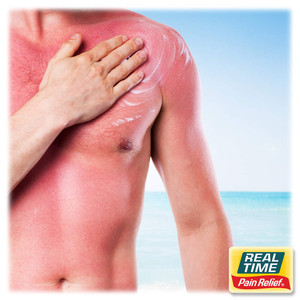5 Tips for a Herniated Disc
28th Jul 2023
A herniated disc, which is also called a bulging or ruptured disc, is one of the most common causes of lower back pain in adults. According to the American Academy of Orthopedic Surgeons, herniated discs occur most frequently in adults between the ages of 30 and 50. But one can develop in adults of any age for a variety of reasons.
What is a Herniated Disc?
Between each vertebra in your back is a disc. Each disc has a hard outer layer and a gel-like soft internal section. The discs act as a cushion, decreases impact, and helps to keep the vertebrae in the proper place.
A herniated disc occurs when the soft material inside the disc pushes out through and irritates the surrounding nerves. Although a herniated disc can develop anywhere along the spine, it tends to be most common in the lower back.
Herniated Disc Causes
A herniated disc can develop due to a sudden injury from bending, pulling, or lifting. Using poor technique when doing these motions along with bad posture increases the likelihood of an injury.
It’s also common for a herniated disc to develop due to overuse, such as repetitive movements over time. Being overweight and sedentary increases a person’s risk of developing a herniated disc during middle age.
Symptoms of a Herniated Disc
Symptoms of a herniated disc may come on suddenly or develop gradually. Herniated disc symptoms can become severe and even debilitating in some cases. Symptoms may include:
- Pain
- Numbness
- Weakness
- Tingling
The pain and numbness from a herniated disc can radiate to other parts of the body. For example, if the herniated disc is in the lower back, pain and associated symptoms may radiate to the thighs, buttocks, and the calves.
5 Tips to Help with a Herniated Disc
A herniated disc can be very uncomfortable and interfere with everything from work to getting a good night’s sleep. The good news is there are several ways to reduce pain. Consider a combination of the following treatments:
#1) Decrease Pressure on the Area
Decreasing the amount of pressure on the affected area helps reduce pain. Depending on where in the spine the herniated disc is located, there may be several ways to minimize pressure on the disc. For example, avoid sleeping on your stomach or sitting for extended amounts of time. Do not wear high heels or do any type of high-impact activities. Use your knees to bend instead of your back and always use good posture.
#2) Reduce Inflammation With Ice
The first few days after sustaining a herniated disc, use ice to decrease inflammation and pain. Place an ice pack on the affected area for 15 minutes several times a day. Ice can still be used several days after the injury if it appears to be providing relief.
#3) Apply Moist Heat
After the first few days, consider using moist heat, which helps increase blood flow to the area and reduce muscle spasms. Place a hot compress on the affected area of the spine periodically throughout the day. You can also try other forms of heat and see which method provides the most relief. For instance, use adhesive heat wraps or sit in a whirlpool.
#4) Try a Bath Bomb Infused with Arnica
Adding a pain-relieving bath bomb to a warm bath might be an effective way to get some relief. Choose a bath bomb that contains an ingredient like arnica. Other beneficial ingredients are Epsom salt, chamomile, helichrysum, and willow bark. Fill a tub with warm water that is at a comfortable temperature for you. Add the bath bomb and relax for about 20 to 30 minutes.
#5) Stretching and Strengthening Exercises
While it’s important to avoid activities that increase pain and pressure on the disc, total bed rest is usually not recommended. Instead, certain stretching and strengthening exercises may be helpful in reducing pain. The goal of the exercises is to push the disc away from the nerve root. The specific exercises recommended will often depend on the area of the spine affected. It’s best to talk with your healthcare provider when choosing which exercises to do.
Usually, pain from a herniated disc will slowly improve over several weeks. In most cases, pain should be gone in a few months. If pain from a herniated disc does not appear to be gradually decreasing in a few weeks, additional treatment may be needed. Physical therapy, pelvic traction, and steroid injections are sometimes used to help treat a herniated disc. Surgery is usually not needed and tends to be a last resort.





